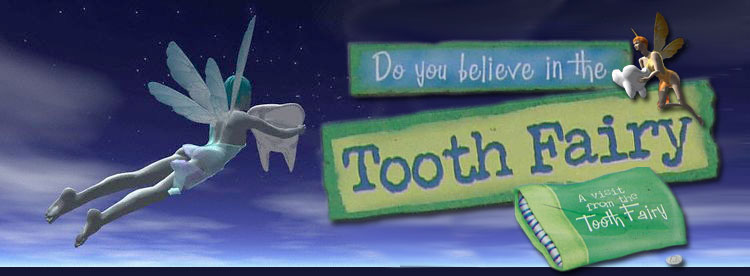The primary useful purpose of the tooth-fairy myth is probably to give children a small reward and something to look forward to when they lose a tooth, a process which they might otherwise find worrisome. Also, it gives children a reason to give up a part of themselves that they may have grown attached to.
The Tooth Fairy calls upon the European folk tales of House Elves or Brownies who will often preform useful tasks or exchange valuable treasures for things humans view as mundane or useless.
Cultural historians say that superstition has always surrounded teeth and these valuable tokens have been used to ward of witches and demons in the past. Vikings were even supposed to give kids a “tooth fee” back in the day for using children's valuable chompers.
In a variety of primitive cultures, the shedding of the first baby tooth became a kind of ritual. This rite of passage has been documented numerous ways. Many of these ceremonies included verbal incantations and wishes, along with actions. Variations on this custom were most likely passed along through stories told from generation to generation.

Click here to visit this Tooth Fairy teeth whitening site.
Where did the Tooth Fairy get it's start?
The most commonly accepted belief by academics is the fairy's development from the tooth mouse, depicted in an 18th-century French fairy tale. In “La Bonne Petite Souris,” a mouse changes into a fairy to help a good queen defeat an evil king by hiding under his pillow to torment him and knocking out all his teeth. Also, in Europe, baby teeth used to be fed to rodents and other animals in the hopes of getting sharper, more rodent-like, teeth in the future.
The tooth fairy as we now know her didn't make an appearance until the early 1900s, as a generalized "good fairy" with a professional specialization. The child loses a baby tooth, which is put under the pillow at night, and the tooth fairy exchanges it for a present, usually money but sometimes candy. Exchanges of this sort are common in many rites of passage (like an exchange of rings at a wedding, say).
The tooth fairy grew slowly in popularity over the next few decades. The Tooth Fairy, a three-act playlet for children by Esther Watkins Arnold, was published in 1927. Lee Rogow's story "The Tooth Fairy" appeared in 1949 and seems to be the first children's story written about the tooth fairy. She became widely popular from the 1950s onward, with a veritable eruption of children's books, cartoons, jokes, etc., including more focus on children's dental hygiene. Parents cheerfully bought into the idea and the tooth fairy became part of family life. The 1980s saw the commercialization and merchandising of the tooth fairy, with special pillows, dolls, banks, etc
This combination of ancient international traditions has evolved into one that is distinctly American. Folklorist Tad Tuleja suggests three factors that have turned this folk belief into a national custom: postwar affluence, a child-directed family culture, and media encouragement.
Pioneering scholar Rosemary Wells, a former professor at the Northwestern University Dental School, found archival evidence that supports the origin of different tooth fairies in the U.S. around 1900, but the first written reference to one specific symbol in American literature didn't appear until Lee Rothgow's 1949 book, “The Tooth Fairy.” Considered the world's tooth fairy expert, Dr. Wells even created the Tooth Fairy Museum in 1993 in her hometown of Deerfield, Illinois. But according to the local library, it evaporated after her death when her husband liquidated all her memorabilia.
Kindly Share Our Website :)
Tooth-Fairy.org
 Home
Home
 Legend of Tooth Fairy
Legend of Tooth Fairy
 Poem for Fairy Time
Poem for Fairy Time
 Tooth Fairy Letter
Tooth Fairy Letter
 Dentist Help
Dentist Help

